Abstract
The in vivo efficacy of daptomycin, a new cell wall-active anti-gram-positive-bacterial agent, was compared to those of cloxacillin and vancomycin in a rat model of Staphylococcus aureus endocarditis. Both methicillin-susceptible S. aureus (MSSA) and methicillin-resistant S. aureus (MRSA) strains were used. When therapy was initiated early (8 h) after infection, at the time when valvular bacterial counts were relatively low (approximately 10(6) CFU/g of vegetation), 3 days of therapy was found to be effective against the MSSA strains whatever the antibiotic regimen. In contrast, when the onset of therapy was delayed up to 15 h after infection, so that higher bacterial counts could develop on the valves (approximately 10(9) CFU/g of vegetation), a longer period of treatment (6 days) was required to cure infection. Under these conditions after 3 days of therapy, daptomycin was more effective than cloxacillin and vancomycin against the MSSA strains. Similarly, daptomycin showed a greater activity than vancomycin against the MRSA strain after 3 days of treatment, but after 6 days both antibiotics were equally effective. Decreasing doses of daptomycin showed decreasing activity: 10 mg/kg of body weight every 12 h (q12h) was better than 5 mg/kg q12h, whereas 5 mg/kg q24h (providing drug levels in blood detectable only during the first 12 h) failed to cure infection. In vitro, daptomycin was highly bactericidal at high concentrations (25 and 60 micrograms/ml, corresponding to peak levels in serum after doses of 5 and 10 mg/kg, respectively) and bacteriostatic at lower concentrations (0.5 to 2.5 micrograms/ml, corresponding to trough levels in serum). In conclusion, against low-bacterial-count S. aureus endocarditis, daptomycin showed an efficacy similar to those of vancomycin and cloxacillin. Against high-bacterial-count S. aureus endocarditis, daptomycin showed a higher bactericidal activity than cloxacillin (against the MSSA strains) and vancomycin (against both the MSSA and MRSA strains).
Full text
PDF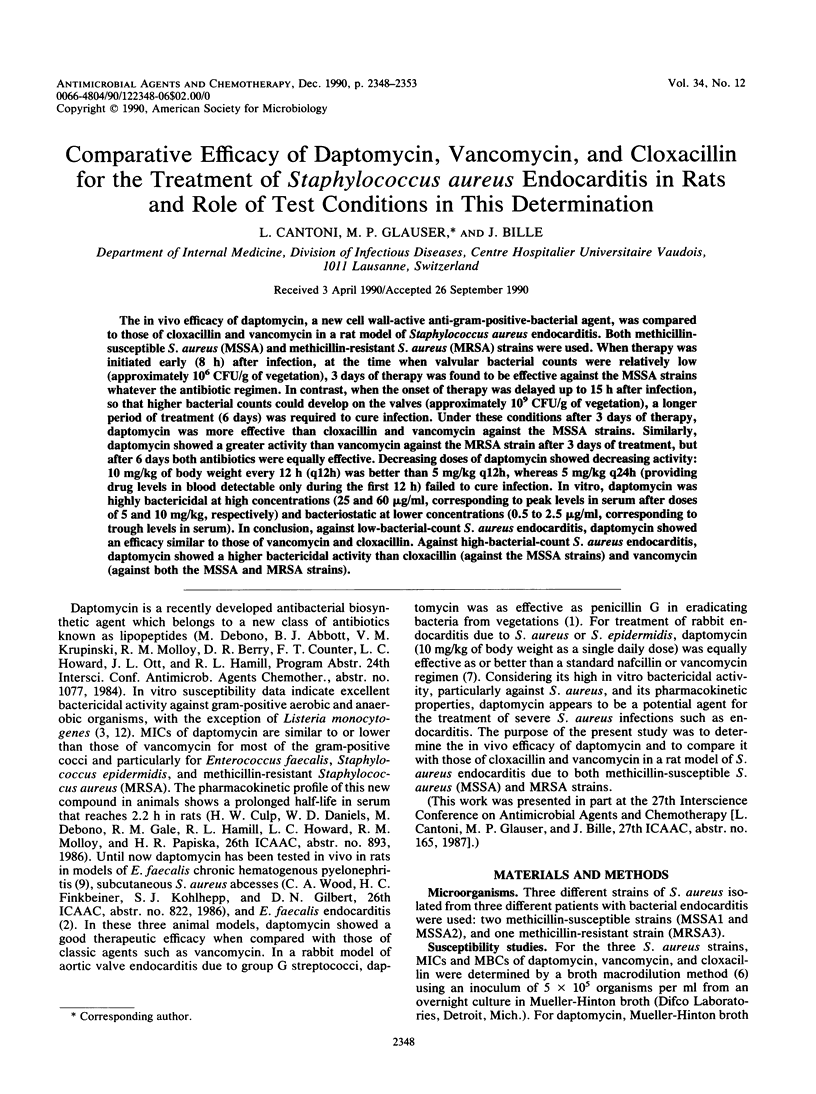
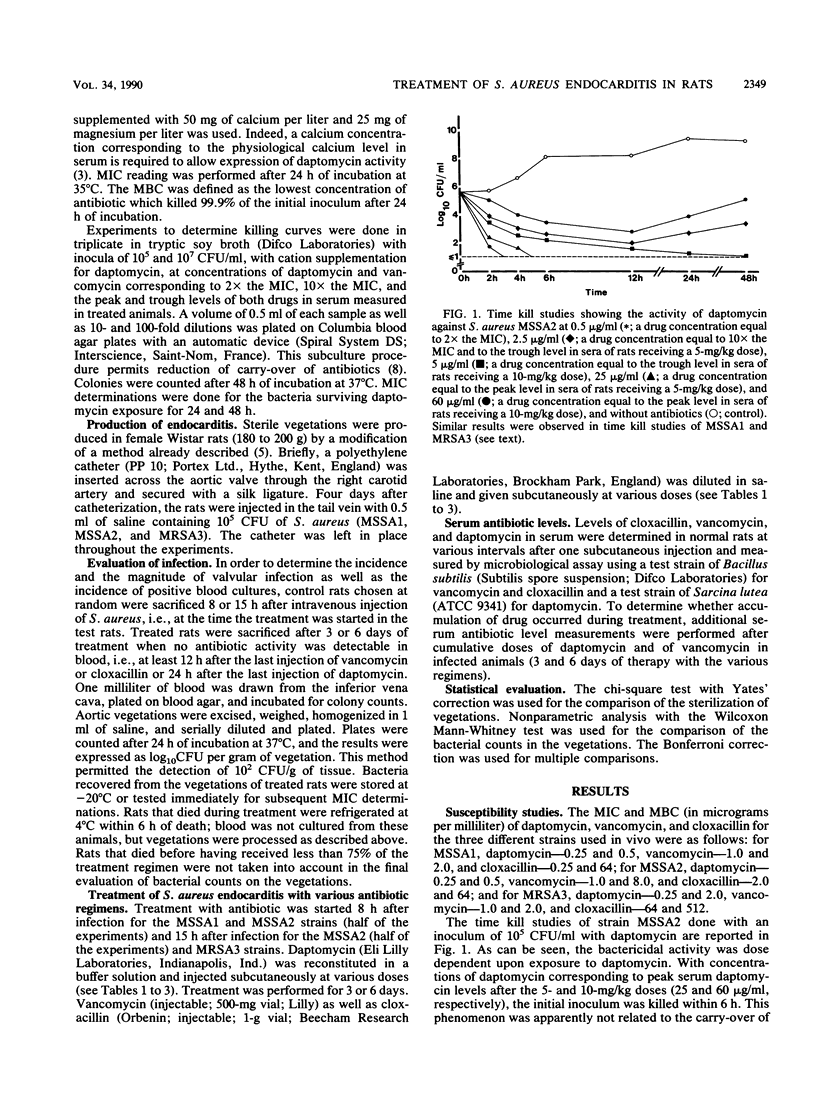
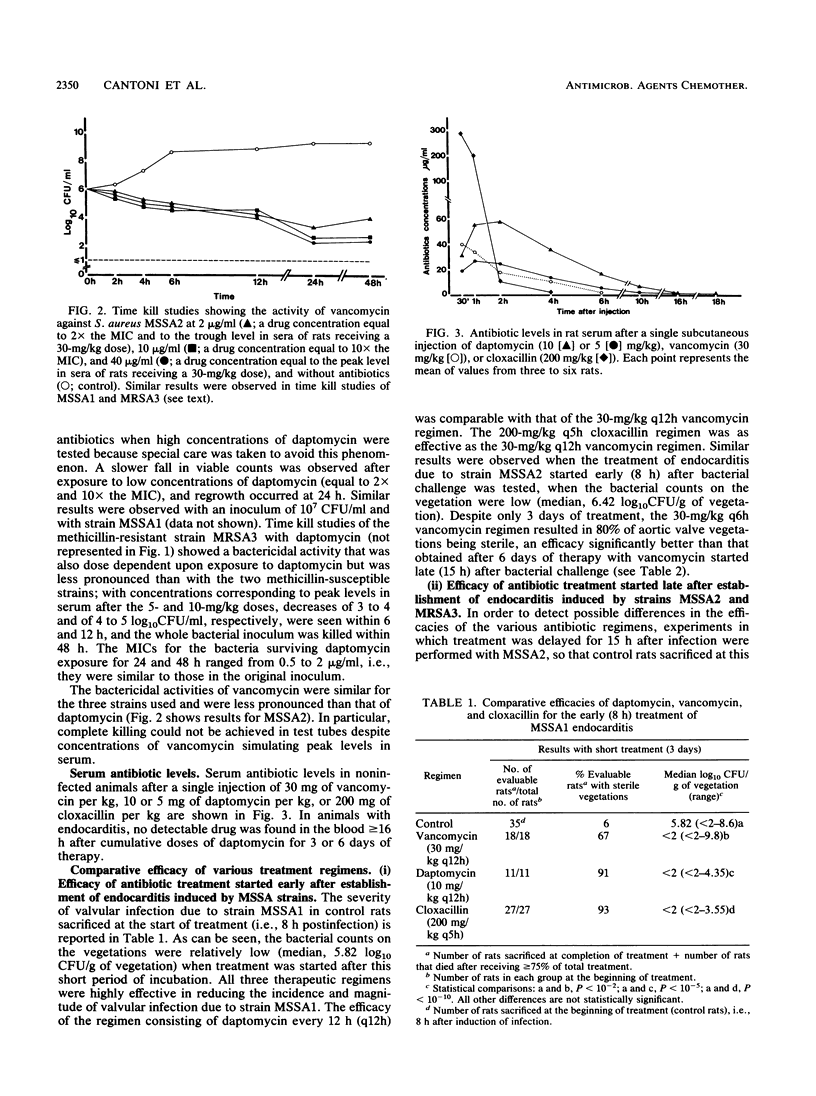
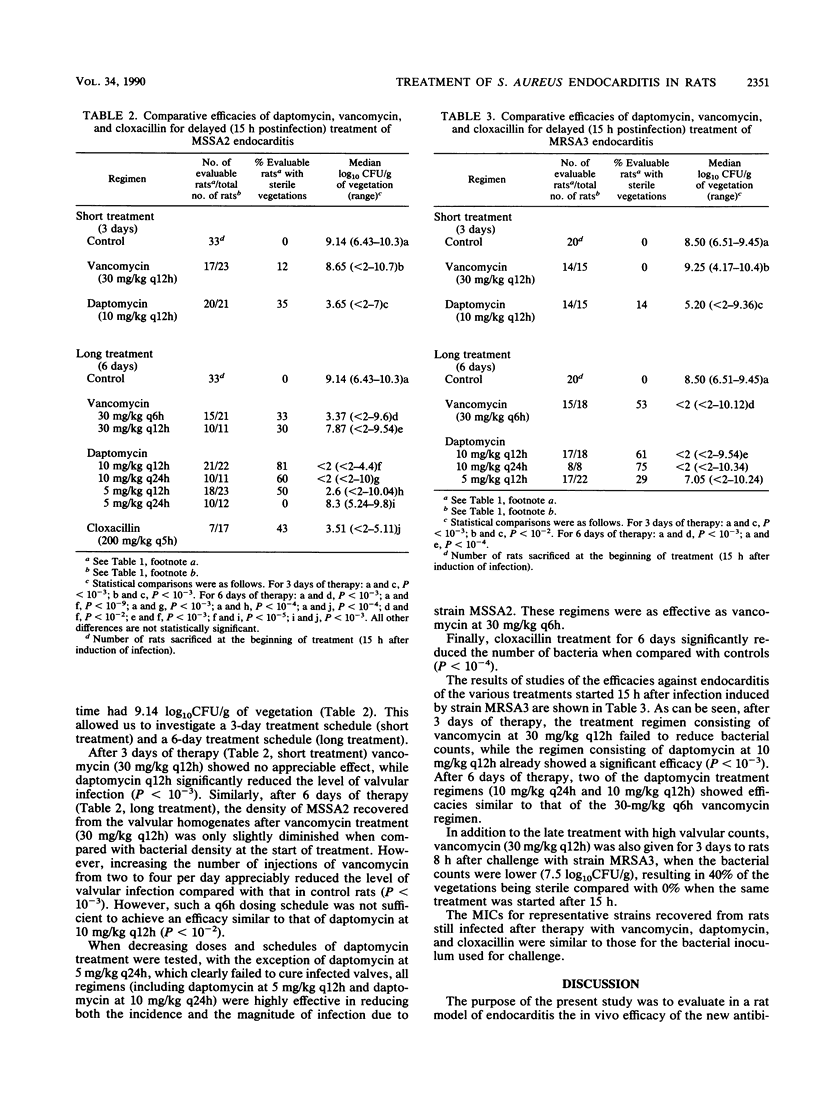
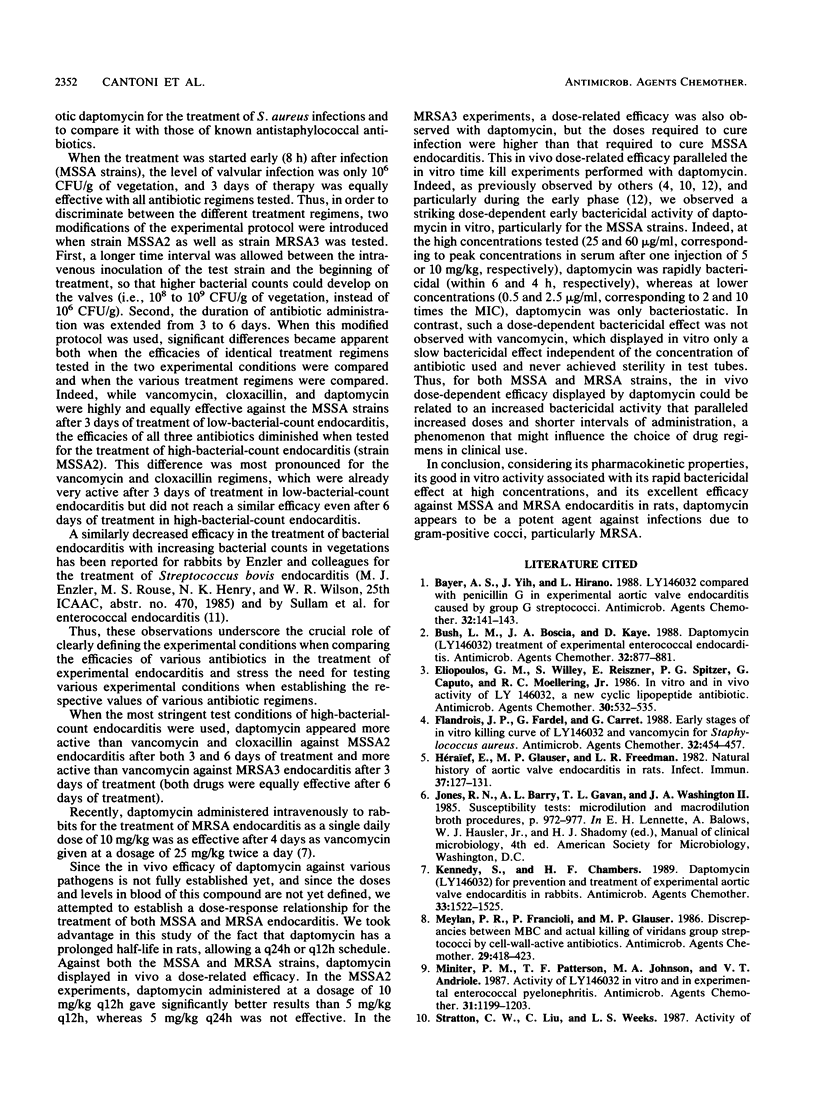
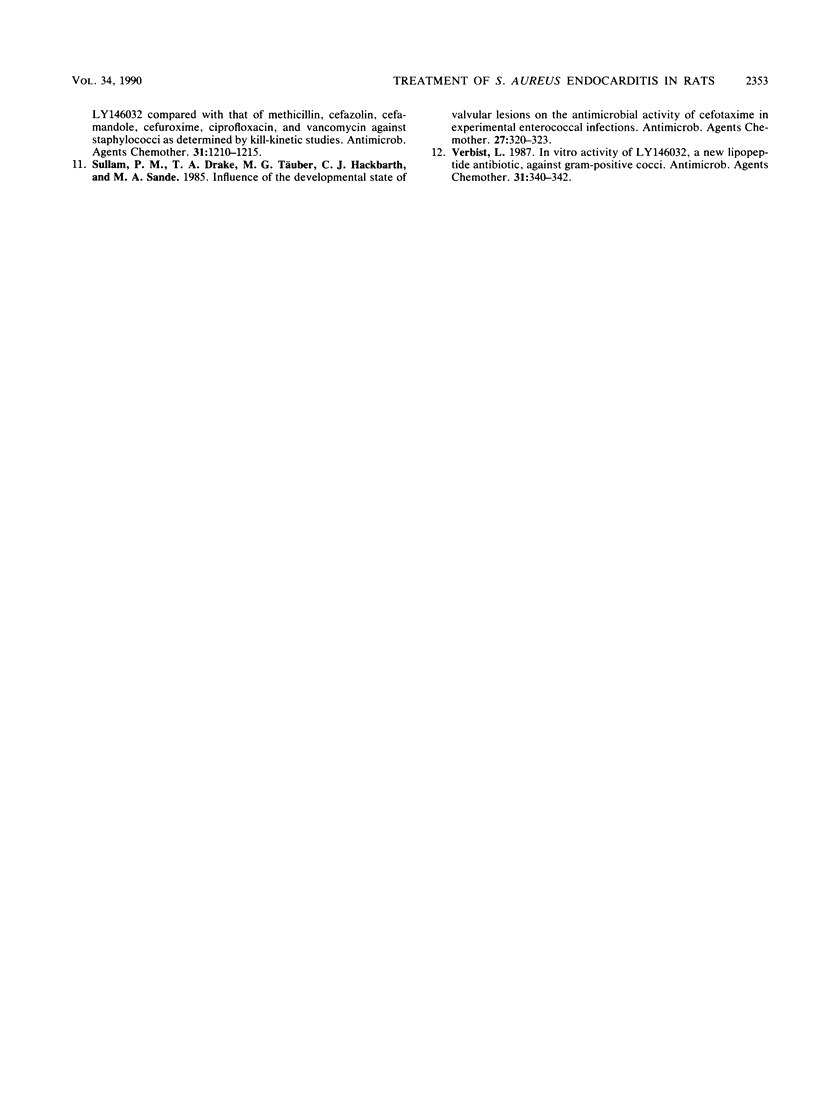
Selected References
These references are in PubMed. This may not be the complete list of references from this article.
- Bayer A. S., Yih J., Hirano L. LY146032 compared with penicillin G in experimental aortic valve endocarditis caused by group G streptococci. Antimicrob Agents Chemother. 1988 Jan;32(1):141–143. doi: 10.1128/aac.32.1.141. [DOI] [PMC free article] [PubMed] [Google Scholar]
- Bush L. M., Boscia J. A., Kaye D. Daptomycin (LY146032) treatment of experimental enterococcal endocarditis. Antimicrob Agents Chemother. 1988 Jun;32(6):877–881. doi: 10.1128/aac.32.6.877. [DOI] [PMC free article] [PubMed] [Google Scholar]
- Eliopoulos G. M., Willey S., Reiszner E., Spitzer P. G., Caputo G., Moellering R. C., Jr In vitro and in vivo activity of LY 146032, a new cyclic lipopeptide antibiotic. Antimicrob Agents Chemother. 1986 Oct;30(4):532–535. doi: 10.1128/aac.30.4.532. [DOI] [PMC free article] [PubMed] [Google Scholar]
- Flandrois J. P., Fardel G., Carret G. Early stages of in vitro killing curve of LY146032 and vancomycin for Staphylococcus aureus. Antimicrob Agents Chemother. 1988 Apr;32(4):454–457. doi: 10.1128/aac.32.4.454. [DOI] [PMC free article] [PubMed] [Google Scholar]
- Héraïef E., Glauser M. P., Freedman L. R. Natural history of aortic valve endocarditis in rats. Infect Immun. 1982 Jul;37(1):127–131. doi: 10.1128/iai.37.1.127-131.1982. [DOI] [PMC free article] [PubMed] [Google Scholar]
- Kennedy S., Chambers H. F. Daptomycin (LY146032) for prevention and treatment of experimental aortic valve endocarditis in rabbits. Antimicrob Agents Chemother. 1989 Sep;33(9):1522–1525. doi: 10.1128/aac.33.9.1522. [DOI] [PMC free article] [PubMed] [Google Scholar]
- Meylan P. R., Francioli P., Glauser M. P. Discrepancies between MBC and actual killing of viridans group streptococci by cell-wall-active antibiotics. Antimicrob Agents Chemother. 1986 Mar;29(3):418–423. doi: 10.1128/aac.29.3.418. [DOI] [PMC free article] [PubMed] [Google Scholar]
- Miniter P. M., Patterson T. F., Johnson M. A., Andriole V. T. Activity of LY146032 in vitro and in experimental enterococcal pyelonephritis. Antimicrob Agents Chemother. 1987 Aug;31(8):1199–1203. doi: 10.1128/aac.31.8.1199. [DOI] [PMC free article] [PubMed] [Google Scholar]
- Stratton C. W., Liu C., Weeks L. S. Activity of LY146032 compared with that of methicillin, cefazolin, cefamandole, cefuroxime, ciprofloxacin, and vancomycin against staphylococci as determined by kill-kinetic studies. Antimicrob Agents Chemother. 1987 Aug;31(8):1210–1215. doi: 10.1128/aac.31.8.1210. [DOI] [PMC free article] [PubMed] [Google Scholar]
- Sullam P. M., Drake T. A., Täuber M. G., Hackbarth C. J., Sande M. A. Influence of the developmental state of valvular lesions on the antimicrobial activity of cefotaxime in experimental enterococcal infections. Antimicrob Agents Chemother. 1985 Mar;27(3):320–323. doi: 10.1128/aac.27.3.320. [DOI] [PMC free article] [PubMed] [Google Scholar]
- Verbist L. In vitro activity of LY146032, a new lipopeptide antibiotic, against gram-positive cocci. Antimicrob Agents Chemother. 1987 Feb;31(2):340–342. doi: 10.1128/aac.31.2.340. [DOI] [PMC free article] [PubMed] [Google Scholar]


